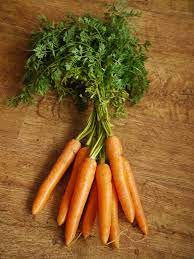No products in the cart.

Firstly, introducing Auscrops, a wonderful market vending company bridging farmers and customers together through market vendors. Click here to find out more about How to Grow Carrot as well fruit and vegetable offers.
How to Grow Carrot
When you want to grow carrots, your first step is choosing the right variety. There are numerous carrot types, each with unique flavors and growth needs. Nantes and Imperator are popular, but you may prefer the round Atlas for smaller gardens.
Find the Perfect Spot
Carrots prefer full sun exposure. The soil should be deep, loose, well-draining, and free from rocks or hard clods. Carrots tend to split and fork in compacted soil, so opt for raised beds if your garden soil is heavy or rocky.
Prepare the Soil
Next, prep your soil. Aim for a pH of 6.0 to 7.0, and amend with compost or aged manure if necessary. Remember, carrot seeds are tiny, so create a smooth and flat seedbed to facilitate planting.
Time to Plant
Once spring temps reach around 50°F, you’re ready to plant. Space your rows about 1-2 feet apart, sow the seeds 1/4-inch deep, and then gently cover them with soil. Keep the soil consistently moist until the seedlings emerge.
Tender Loving Care
After seedlings appear, keep the bed free of weeds. This avoids competition for nutrients. Thin out seedlings when they’re an inch tall, leaving about 2 inches between each plant.
Watering and Feeding
Carrots are thirsty plants. They need water every week, so keep the soil consistently moist. A good feeding regimen includes a balanced fertilizer application every 3-4 weeks.
Harvest Time
Most carrot varieties mature in 60-80 days. When the tops of the carrots push up and out of the soil, they’re ready for harvest. Gently loosen the surrounding soil, grasp the carrot tops firmly, and pull.
Common Pests and Diseases
Carrot rust flies and aphids may be problematic, as can leaf blight and root knot nematodes. Regular inspection of your carrot crop helps catch these issues early. Organic and natural solutions often manage these pests and diseases effectively.
Enjoy Your Carrots
After harvest, store your carrots in a cool, dark place. They’ll provide a fresh, nutritious crunch in salads, a sweet addition to roasts, or the star ingredient in a comforting soup.
Growing your own carrots offers a rewarding experience. The knowledge of nurturing a plant from seed to harvest not only cultivates self-sufficiency but also instills a sense of wonder for the natural world. As you crunch into your first homegrown carrot, remember, this is the fruit of your labor – and it tastes all the more delicious because of it.
Click here to read similar artiles.
 Français
Français 










